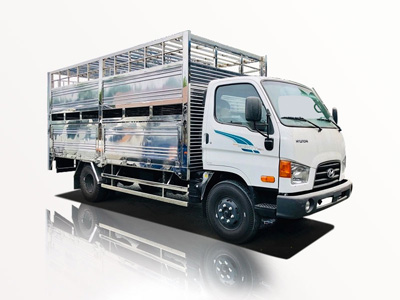Bucket truck jibs play a vital role in enhancing the functionality and efficiency of bucket trucks, particularly in various industries where aerial work is required. This article provides an in-depth exploration of bucket truck jibs, focusing on their design, operational methods, advantages, and practical applications. By understanding these components better, operators and organizations can make informed decisions regarding their use.
What is a Bucket Truck Jib?
A bucket truck jib is an extension that is attached to a bucket truck, enabling it to reach higher or more difficult locations. Typically made of durable materials such as steel or aluminum, jibs are designed to be adjustable and often feature a pivoting mechanism to allow for various angles of reach.
The Importance of Bucket Truck Jibs
Bucket truck jibs are essential for several reasons:
- Increased Reach: They allow operators to reach high structures and hard-to-access areas safely.
- Flexibility: Adjustable jibs can work with various types of tasks ranging from utility repairs to tree trimming.
- Safety: Jibs are designed to provide a stable and controlled environment for workers at heights.
History and Evolution of Bucket Truck Jibs
The concept of bucket trucks dates back several decades, evolving from simple, manually operated devices to modern hydraulic machines equipped with advanced jibs. The innovative designs have significantly improved job safety and efficiency.
Types of Bucket Truck Jibs
1. Standard Jib
A standard jib is a fixed extension that allows for straightforward access and minimal adjustments. It’s typically used for basic aerial work where additional reach is required but flexibility isn’t a concern.
2. Articulating Jib
Articulating jibs feature multiple joints that enable more complex movements. Operators can adjust the jib to various angles, making it ideal for challenging tasks, such as reaching around obstacles.
3. Telescopic Jib
Telescopic jibs can extend or retract, offering significant flexibility in reach and height. These are especially useful for applications requiring variable lengths and compact storage.
How to Operate a Bucket Truck Jib Safely
Operating a bucket truck jib requires training and adherence to safety procedures. Here are key steps for safe operation:
1. Pre-Operational Checks
- Inspect the jib for any signs of wear or damage.
- Ensure all hydraulic functions are working appropriately.
- Check the bucket for stability and sufficient working load limits.
2. Secure the Area
Before operation, secure the work area to prevent accidents. Implement caution signage and cordon off the vicinity if necessary.
3. Training and Licensing
Only trained and certified personnel should operate a bucket truck jib. Regular training sessions should be conducted to ensure operational safety and familiarity with the equipment.
Common Applications of Bucket Truck Jibs
Bucket truck jibs are utilized in various industries for several applications, including:
1. Utility Maintenance
Electric companies often use bucket truck jibs for maintenance and installation of power lines, poles, and streetlights.
2. Tree Care
Arborists utilize bucket truck jibs for tasks like tree trimming and removal, as they can reach high branches safely and effectively.
3. Construction and Renovation
Jibs are valuable in the construction sector for placing materials or doing finishes at high elevations that would otherwise be inaccessible.
4. Sign Installation
Businesses use bucket truck jibs for installing and maintaining signage, particularly in hard-to-reach locations.
Advantages of Using Bucket Truck Jibs
Utilizing bucket truck jibs offers several benefits:
- Enhanced Productivity: Jibs save time when reaching high or difficult spots.
- Cost Efficiency: Reducing the need for scaffolding or cranes decreases overall project costs.
- Workforce Safety: Jibs provide a structured environment to limit risks associated with working at heights.
Purchasing Considerations for Bucket Truck Jibs
When purchasing a bucket truck jib, consider the following:
1. Load Capacity
Ensure the jib can handle the weight of the equipment and personnel you’ll be placing in it.
2. Material Construction
Look for durable materials that provide stability and resistance to wear and tear.
3. Adjustability
Choose a jib that offers various adjustable features and articulations for flexibility on the job.
Maintenance of Bucket Truck Jibs
Regular maintenance is crucial for ensuring longevity and reliability. Here are maintenance tips:
1. Regular Inspections
Conduct thorough inspections of the jib before and after use to check for any potential issues.
2. Lubrication
Keep moving parts well-lubricated to prevent corrosion and ensure smooth operation.
3. Proper Storage
When not in use, store the jib in a secure, dry location to protect it from environmental damage.
Frequently Asked Questions (FAQ)
1. What is the maximum height a typical bucket truck jib can reach?
The maximum height varies widely between models and configurations, with extensions often reaching anywhere from 10 to 50 feet or more.
2. Are bucket truck jibs compatible with all bucket trucks?
No, compatibility depends on the make and model of the bucket truck. It’s essential to check specifications before purchasing or attaching a jib.
3. Can anyone operate a bucket truck with a jib?
No, operators must undergo specialized training and obtain certifications to ensure safety and compliance with regulations.
4. How do I know which type of jib is best for my needs?
Assess your specific applications, including reach required, types of tasks, and site conditions, to determine the best jib for your needs.
5. What maintenance practices are necessary for bucket truck jibs?
Regular inspections, lubrication of moving parts, and proper storage practices are vital for ensuring durability and safety.
6. Are there safety certifications for bucket truck jibs?
Yes, various safety certifications exist, and it’s essential to purchase jibs that comply with industry standards to ensure safety during use.





